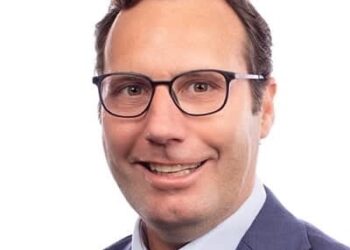Although the New Year is now well underway, the debate that vertical integration leads to poor quality of advice and advice that is not in the best interest of clients has continued without a break.
The prospects and future for the industry are truly positive however, progress and potential are being severely hampered as the vertical integration models are an extension of the pyramid business model that dominates the Australian corporate landscape.
Across all industries, and especially in financial services, the pyramid structure has resulted in internal cultures of risk aversion with high compliance regimes and infrastructures devoted to protecting the ‘brand’ at all costs.
Corporate Australia typically has elite boards that make CEO appointments for six years and on taking the helm they (CEOs) immediately introduce a re-structure and roll out a new business plan that is often accompanied by a new logo or tinkering with the existing design or slogan.
The CEO’s plan is not debated internally as it’s filtered down the organisation where corporate rules and compliance suffocates individual ideas, innovation and entrepreneurship. Any employee who doesn’t agree with the new direction is either retrenched, moved sideways or branded ‘not a team player’. Whistle-blowers that leak to the media are especially frowned upon and reviled.
After six years of no share price growth and poor profit returns, the CEO retires with a huge payout to become an industry consultant or gets a Government appointment. The board then announces that the CFO is to replace the CEO and they go to the market announcing write-downs of company assets.
The newly appointed CEO duly announces a restructure, rolls out his / her new business plan and the cycle of diminishing returns inside the obsolete pyramid structure starts again with consumers and shareholders paying the bill.
Is it any wonder in this environment that the general population in Australia and globally, especially the middle class has had enough having realised that the promise of the ‘trickle down’ economic benefit narrative of the past 30 years has failed them abysmally?
Unaffordable housing, lost jobs, no job security, higher cost of living, the concentration and entrenchment of wealth (just eight people have the same wealth as 3.6 billion of the world’s poorest people) are examples of this economic dysfunction.
This is a new world in which the conventions of the past no longer apply as we live with the threat of trade wars and non-stop rapid advances in technology. At the frontline are accountants, financial planners and lawyers valiantly trying to address rapidly changing consumer needs whilst being hindered by disconnected institutions and government.
We need to change these pyramid models and review education/training practices as it will be technology and new work practices that will force change and in doing so create new jobs for the millennials.
The overhaul has already started.
Paul Tynan is the chief executive of Connect Financial Service Brokers




At PD days and other corporate functions they wheel out the motivational speaker who encourages creativity and vision – “be bold” they will say ‘take risks and learn by your mistakes”. Pity it doesn’t apply to a financial advice industry, waste of corporate dollars really. Financial advice is looking very tired and common. We’re all subject to the same tight regulations, same audit process, complaints mechanisms. Being exciting with advice is not encouraged or supported. Be a bit different and you can expect a D audit.
Apologies, however, this article is just an overview of a standard pyramid model in business, leading into a disconnected statement regarding housing and the middle class and that we need to change the corporate model with no suggestion as to how.
Let me offer the alternate and fill in the blanks;
An example structure could be The Square Model, what you have is four quadrants of a square, and they are all equally important.
A perfect business has marketing, sales, product and operations. The organisation would adapt and advance if each of our four quadrants is extremely robust and respected. Under this model, different functions are carried out by specialists who have equally important roles.
This model is being adopted by some Legal and Accounting firms currently.
Unfortunately this is also very true of Government and as such we have both the Public Government Sector and the Commercial Public Sector all acting in unison with the same irresponsible conduct it is little wonder that the public have lost confidence.
There are laws in place to ensure client best interest, regardless of the business model. If the government spent funds on enforcement and education rather than more and more red tape we would all be better for it, especially the end consumer.
the great socialist dream
As long as Bankers incentivise their employees to flog product (and ignore FOFA and Best Interest) then no amount of Bank CEO apologies or ethics training programs are EVER going to change the behaviour of the banks! History is my witness.
I would actually be quite interested in any significant witnessed history of ignoring FOFA and Best Interest? Yes, we can all quote examples of widespread poor behaviour before these things came in. But they have been introduced quite recently and to my knowledge there is no significant data yet about compliance levels. A lot of people are whining about the need for more regulation, and trying to use pre FOFA data to substantiate their agenda. But we need to see how the new regulations are working first before rushing to impose yet another layer of suffocating bureaucracy and regulation that ultimately drives up costs and complexity for consumers.
The laws were in place 20 years ago. The simple requirement of giving a pds and soaa were ignored There is no need to bring in further rulings ,we just need a regulator that gets of their backsides and enforce.ThIs is all a cover up to support the big banks and delete those already following their obligations such as the smaller advisers
You need to stand in line at your local Bank branch then. it still goes on